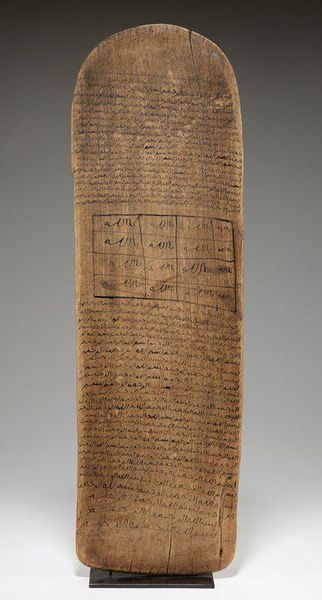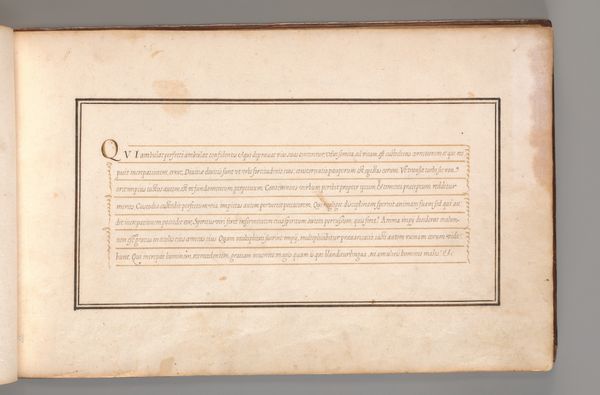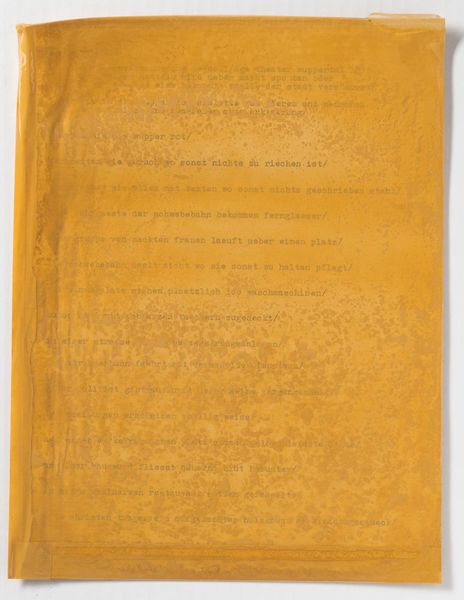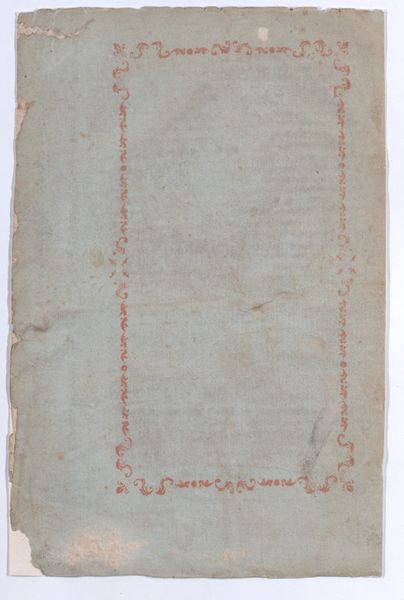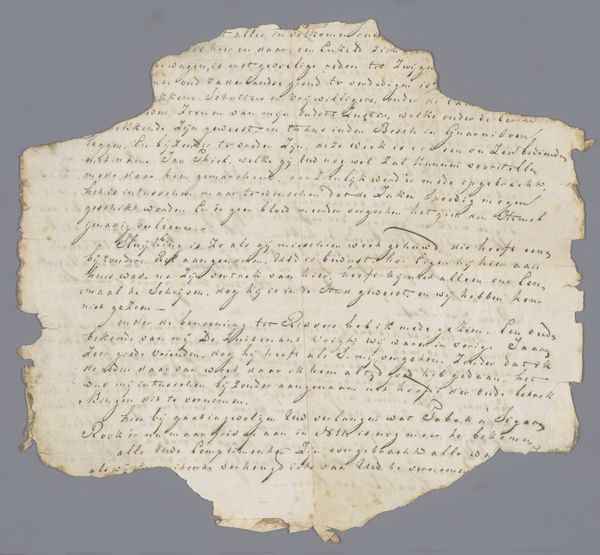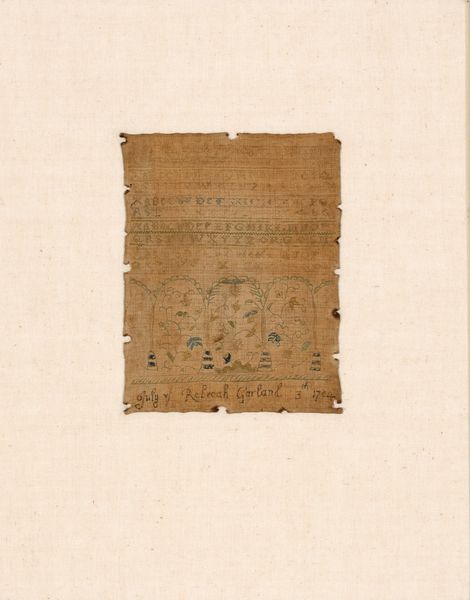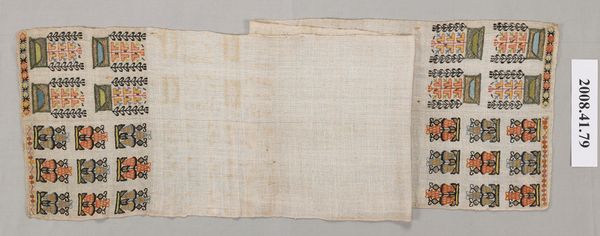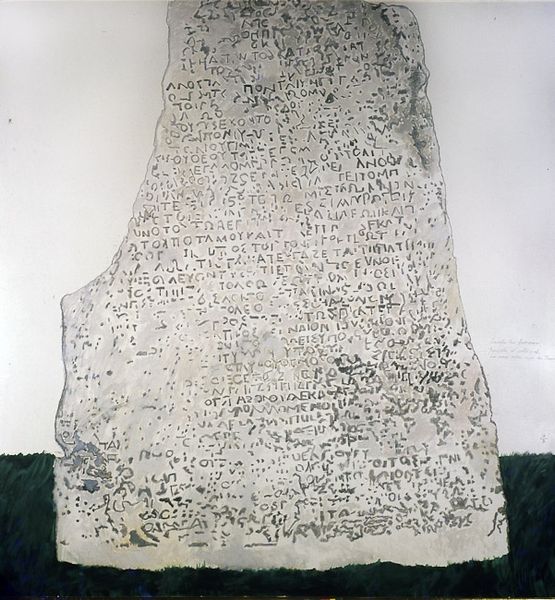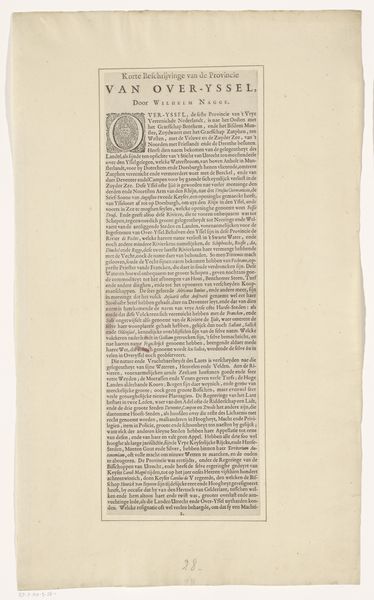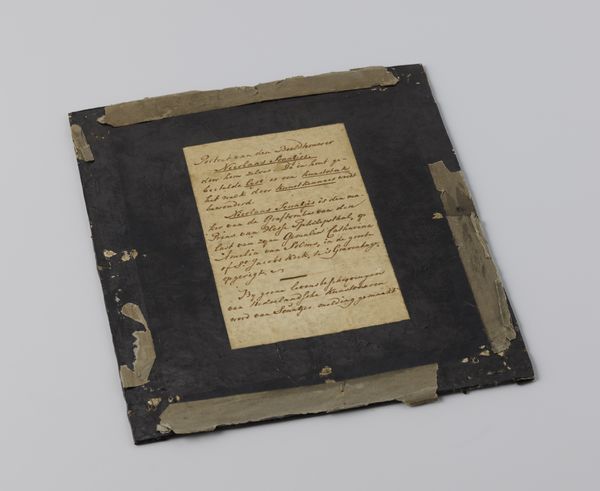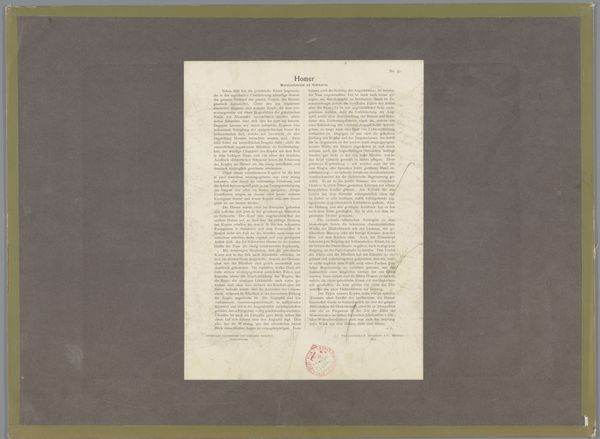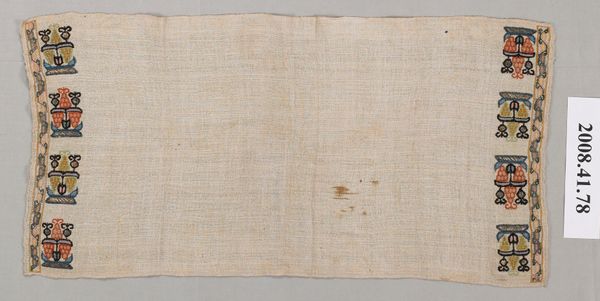
drawing, ink, wood
#
drawing
#
ink
#
wood
#
islamic-art
#
calligraphy
Dimensions: 18 × 8 1/2 × 3/4 in. (45.72 × 21.59 × 1.91 cm)
Copyright: No Known Copyright
Curator: Here we have a Qur'anic writing board, believed to be from around the mid-20th century. The board on view here at the Minneapolis Institute of Art combines ink calligraphy and drawings on wood. Editor: It strikes me immediately as wonderfully tactile. The grain of the wood, the precision of the calligraphy...there’s a very grounded quality about the object itself, before we even consider the text. Curator: Indeed. Wood as a material connects us back to older traditions and the historical contexts that these objects had, before other materials, like paper, were introduced. It speaks to a lineage of memory kept through sacred text. Islamic calligraphy, even when we can't read it, resonates with a specific history, a set of meanings. What symbols stand out to you? Editor: The handle certainly is striking. The smooth, carved wood gives such character, but my mind keeps returning to what it's like to actually *use* this object. It has clear signs of wear and I can only imagine the amount of labour needed in its making. The care put into smoothing the wood, preparing the ink. These processes hold their own value. Curator: Absolutely. These boards are often used repeatedly by students learning to memorize the Qur'an. After the writing is no longer needed, the board could be cleaned, repainted, and reused by another student, the layers echoing the community's ongoing devotion and collective memory. In a way, this worn aspect is as important as the artistry of the calligraphy. Editor: It humanizes it, absolutely. That wear and tear becomes intrinsic to its artistic identity, its link to craft as well as spiritual purpose. The idea of learning through writing and repetition has its own appeal too, an interesting connection between hand and memory. The texture invites touching; feeling. What stories do you think it has to tell about its previous owners? Curator: So many. We see it as art, but each mark reminds us of the human effort that kept these words alive, not just in the aesthetic beauty of its design, but its place in cultural memory, and lived experience across generations of learners. Editor: An interesting perspective that I appreciate as it urges me to think about art's relationship to work, as well as its ability to function in everyday lives.
Comments
minneapolisinstituteofart almost 2 years ago
⋮
This finely carved and delicately calligraphed board from Nigeria mentions the name of Algerian-born Ahmad al-Tijani (1737-1815), who founded the Tijaniyya Sufi brotherhood in the 1780s. Upon entering the brotherhood, an initiate receives a sequence of holy phrases that he must memorize and repeat twice a day. It would seem that this board contains such a religious, pedagogical text. The Tijaniyya is now widespread in West Africa and was also introduced to the State of Kerala in southwest India. SIDE A:I am asking You, God, to lead me to the way of our sheikh, Imam [Ahmad Tijani].Oh God, Your blessing and Your mercy be upon Muhammad, and on Ibrahim, and the sons of Ibrahim.Oh God, You are glorious and praiseworthy.Praise belongs to God, Lord of the Worlds.There is no power but from God the Almighty. SIDE B:In the name of God, the Lord of Mercy, the Giver of Mercy!Praise belongs to God, Lord of the Worlds, the Lord of Mercy, the Giver of Mercy, Master of the Day of Judgment. It is You we worship; it is You we ask for help. Guide us to the straight path, the path of those You have blessed, those who incur no anger and who have not gone astray. Amen.Praise be to God, Who guided me only through Ahmad Tijani.Then, may God’s prayers and peace be upon the Prophet, the guidance of time.Then God is pleased with Ali al-Tijani.
Join the conversation
Join millions of artists and users on Artera today and experience the ultimate creative platform.
